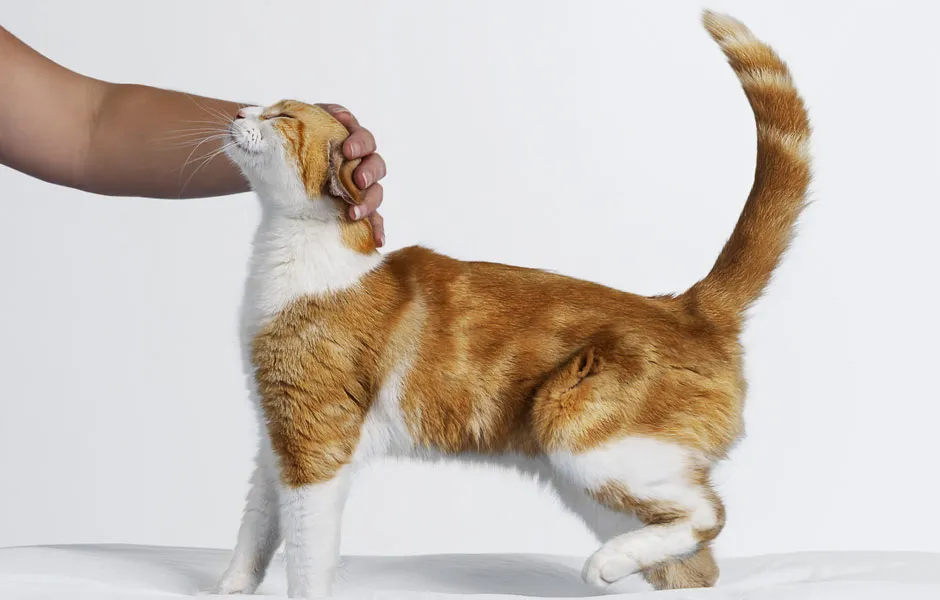It could be necessary in the future to vaccinate domestic animals such as cats and dogs against COVID-19 to curb the spread of the virus, a group of scientists has said.
Coronavirus can infect a wide range of species including cats, dogs, mink and other domesticated species, experts from the University of East Anglia (UEA), Norwich-based research facility the Earlham Institute and the University of Minnesota have said.
In an editorial for the journal Virulence, they wrote that continued evolution of the virus in animals followed by transmission to humans “poses a significant long-term risk to public health”.
“It is not unthinkable that vaccination of some domesticated animal species might be necessary to curb the spread of the infection,” they said.
Last year, Denmark’s government culled millions of mink after it emerged that hundreds of COVID-19 cases in the country were linked with coronavirus variants associated with farmed mink.
Read more about COVID-19:
- Ventilation and viral loads: the key misunderstandings of how coronavirus spreads
- COVID-19 vaccine UK: Everything you need to know about the new coronavirus jabs
One of the editorial’s authors, Cock van Oosterhout, professor of evolutionary genetics at UEA, said dogs and cats can contract coronavirus but that there are no known cases in which there has been spillback to humans.
“It makes sense to develop vaccines for pets, for domestic animals, just as a precaution to reduce this risk,” he said.“What we need to be as a human society, we really need to be prepared for any eventuality when it comes to COVID.
“I think the best way to do this is indeed consider development of vaccines for animals as well. Interestingly the Russians have already started to develop a vaccine for pets, which there’s very little information about.”
Prof van Oosterhout wrote the editorial along Prof Kevin Tyler, editor-in-chief of Virulence, director of the Earlham Institute Prof Neil Hall and Prof Hinh Ly of the University of Minnesota.
“Cats are asymptomatic but they are infected by it and they can infect humans with it," said Tyler.
“The risk is that, as long as there are these reservoirs, that it starts to pass, as it did in the mink, from animal to animal, and then starts to evolve animal-specific strains, but then they spill back into the human population and you end up essentially with a new virus which is related, which causes the whole thing all over again.”

He said that while mink were culled in Denmark, “if you were thinking about domestic animals, companion animals, then you might think about whether you could vaccinate to stop that from happening”.
He added: “It’s not an obvious risk yet.”
In their editorial, the scientists wrote: “Continued virus evolution in reservoir animal hosts, followed by spillback events into susceptible human hosts, poses a significant long-term risk to public health.
“SARS-CoV-2 can infect a wide range of host species, including cats, dogs, mink and other wild and domesticated species and, hence, the vaccination of domesticated animals might be required to halt further virus evolution and spillback events.
“Whilst the vaccination campaigns against SARS-CoV-2/COVID-19 are being rolled out worldwide, new virus variants are likely to continue to evolve that have the potential to sweep through the human population.”
Read the latest coronavirus news:
- What coronavirus variants are in the UK?
- COVID-19 vaccine rollout may not achieve herd immunity amid new variants, research suggests
They said that more transmissible virus strains, such as the UK variant, require more people to be vaccinated to keep coronavirus under control.
“Vaccination against a viral pathogen with such high prevalence globally is without precedent and we, therefore, have found ourselves in uncharted waters,” they wrote.
The scientists have called on governments to consider the continued use of strict control measures such as masks and social distancing as the only way to reduce the evolution and spread of new COVID-19 variants.
How do scientists develop vaccines for new viruses?
Vaccines work by fooling our bodies into thinking that we’ve been infected by a virus. Our body mounts an immune response, and builds a memory of that virus which will enable us to fight it in the future.
Viruses and the immune system interact in complex ways, so there are many different approaches to developing an effective vaccine. The two most common types are inactivated vaccines (which use harmless viruses that have been ‘killed’, but which still activate the immune system), and attenuated vaccines (which use live viruses that have been modified so that they trigger an immune response without causing us harm).
A more recent development is recombinant vaccines, which involve genetically engineering a less harmful virus so that it includes a small part of the target virus. Our body launches an immune response to the carrier virus, but also to the target virus.
Over the past few years, this approach has been used to develop a vaccine (called rVSV-ZEBOV) against the Ebola virus. It consists of a vesicular stomatitis animal virus (which causes flu-like symptoms in humans), engineered to have an outer protein of the Zaire strain of Ebola.
Vaccines go through a huge amount of testing to check that they are safe and effective, whether there are any side effects, and what dosage levels are suitable. It usually takes years before a vaccine is commercially available.
Sometimes this is too long, and the new Ebola vaccine is being administered under ‘compassionate use’ terms: it has yet to complete all its formal testing and paperwork, but has been shown to be safe and effective. Something similar may be possible if one of the many groups around the world working on a vaccine for the new strain of coronavirus (SARS-CoV-2) is successful.
Read more: